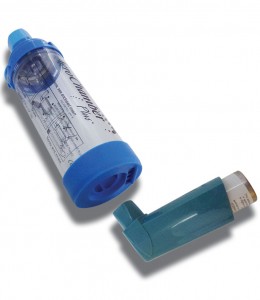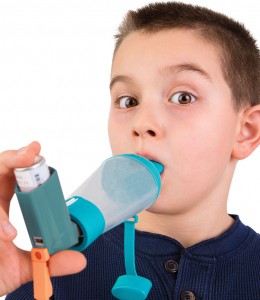On average there are two children in every classroom in the UK with asthma – it affects 1 in 11 children and is the most common long-term medical condition. Students with asthma are allowed their own reliever inhaler in school – either on their person, or in a place easily accessible to them. However, the Asthma UK survey found that 86% of children with asthma have at some time been without their inhaler at school having forgotten, lost or broken it, or because the inhaler has run out. This leaves children vulnerable to an asthma attack. These staggering statistics are undoubtedly why the laws surround asthma in schools are changing.
The law as of October 2014
From the 1st October primary and secondary schools in England will be given the option of keeping emergency inhalers which will be available for them to purchase without prescription. This is a discretionary power which schools will have; and previous laws regarding allowing students with asthma to bring their own inhalers into schools will remain.

The Department for Health produced guidance for schools buying and storing Salbutamol inhalers, without a prescription, for use in emergencies. Written parental consent will be required for the use of the emergency inhaler, and this should be kept on file in a register which should be kept with the emergency inhaler and supplies.
The emergency inhaler is to be used only for children who have been diagnosed with asthma and have been prescribed an inhaler. It is to be used with a spacer for hygiene reasons, and following use the spacer can be given to the student to take home.
Recognising an asthma attack
It is recommended that schools support teachers and staff who can volunteer to be trained not only in using the inhaler and spacer, but also in recognising an asthma attack and following the correct emergency procedure. At Safety First Aid Training we offer courses which cover an asthma module. Learners from education establishments may attend any of these courses – Paediatric First Aid Training, Emergency First Aid for Children, and First Aid at Work.
In terms of recognising an asthma attack, you can identify an attack by the following symptoms: A wheezing sound when breathing out, nasal flaring, distress and/or difficulty communicating due to shortness of breath, and a feeling of tightness in the chest. If you believe a child is undergoing an asthma attack, begin the asthma attack procedure. If the child has a blue tinge around their extremities, such as fingertips and lips, is visibly exhausted, or has collapsed, call an ambulance immediately and then commence the procedure.
The asthma attack procedure is as follows:
- Reassure the child in a calm tone and encourage them to slowly sit upright and lean forward
- Find out whether the school is aware that the child has asthma and if the child’s own inhaler is available, at no point leaving the child unattended – call for help
- If not available, check that the use of the emergency inhaler is permitted (if it is not, call an ambulance)
- Commence with using the inhaler and spacer, helping the child to take two separate puffs of Salbutamol
- If no sign of immediate improvement, give two more puffs every two minutes, up to a maximum of 10 puffs
- If the child does not feel better, or you are worried at any time before you reach 10 puffs, call an ambulance
- If an ambulance does not arrive within 10 minutes and there is still no sign of improvement, give another 10 puffs in the same way
Saving lives
Keeping an inhaler in school for emergency use will have many benefits – it could potentially save a child’s life, but also will prevent unnecessary and traumatic trips to hospital for a child. Beyond this it is sure to give parents of children with asthma greater peace of mind. Providing training on how and when the inhaler should be used will also protect staff by ensuring they know what to do in the event of a child having an asthma attack.
Emergency Asthma Inhaler Kits are available to purchase here, along with a log book, to record the details of an emergency inhaler use; as well as a guidance poster that is recommended to be displayed where the emergency inhalers are kept. In line with the new guidance, a letter of authority will be required on school headed paper and this is to be signed by the principal or head teacher of the school. Salbutamol inhalers can then be sent without the need of a prescription.
If you’d like to know more about any of our training courses then don’t hesitate to get in touch with us today.

